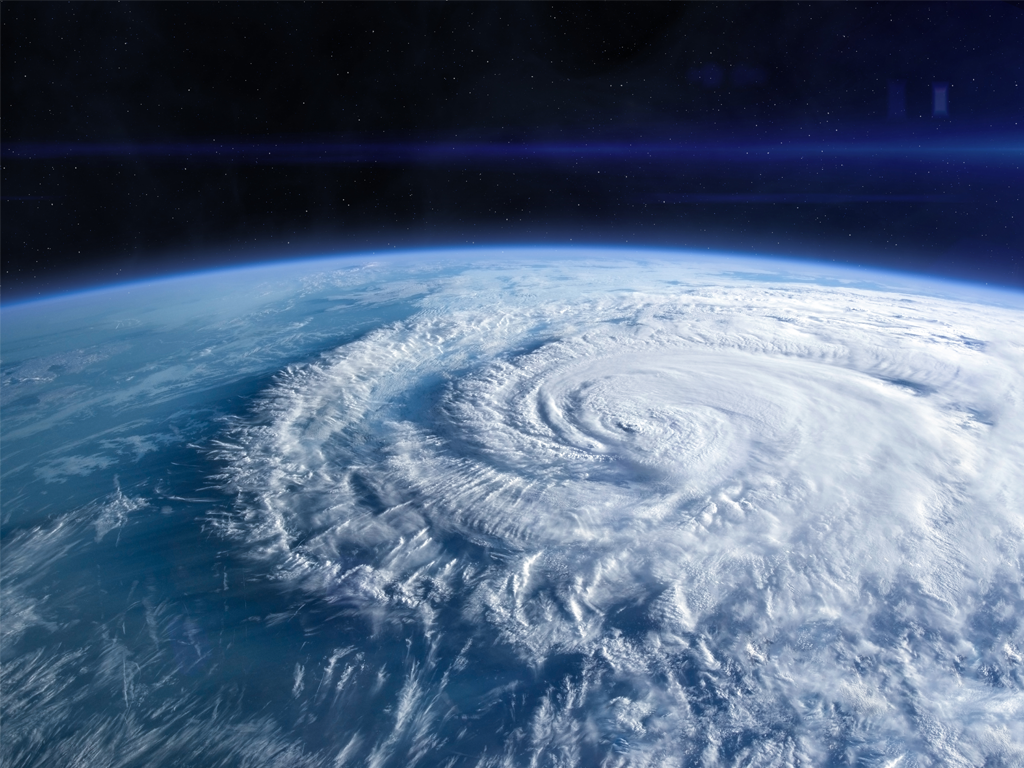
The 2024 Atlantic hurricane season is upon us, and forecasters are predicting it to be a doozy. According to the National Oceanic and Atmospheric Administration (NOAA), there's an 85% chance of an above-normal season, with the potential for 8-13 hurricanes, that could put it in the top 5 most active seasons on record. For comparison, an average hurricane season sees around 10 named storms – that is, winds of 39 mph or higher – with 5.9 becoming hurricanes and 2.5 becoming major hurricanes. To put it simply, this hurricane season could see up to twice as many hurricanes and major hurricanes as an average year.
Direct Hits to Your Home
One in three Americans has been impacted by extreme weather, and hurricanes alone caused $33 billion in property damage in 2022. Hurricanes can wreak havoc on homes in several ways:
- Direct wind damage: powerful winds can rip off roofing, siding, and gutters. It can also break windows and doors, allowing rain and debris to enter the home.
- Storm surge and flooding: coastal areas are particularly vulnerable to storm surge, a massive rise in sea level that can inundate homes and cause flooding up to several feet deep. Floodwater can damage furniture, belongings, and even the home’s structure.
- Power outages: hurricanes can knock out power for days or weeks at a time, impeding sump pumps that could otherwise help prevent basement flooding. Damp conditions from flooding, combined with stagnant air and no air conditioning, create a perfect environment for mold growth.
After the Storm: Mold Concerns
After a hurricane, the combination of high humidity and warm temperatures creates a breeding ground for mold and mildew. Moisture from floodwater, combined with warm, humid conditions creates a breeding ground for these microscopic organisms. Mold thrives on wet building materials like drywall, wood, and insulation. If left unchecked, mold can quickly spread throughout your home, not only causing structural damage but also posing serious health risks.
Exposure to mold spores can trigger respiratory problems, skin irritation, and allergies, especially for vulnerable groups like children, the elderly, and those with weakened immune systems. The longer your home remains damp, the greater the risk of a full-blown mold infestation. Taking swift action to dry out your home and prevent mold growth is crucial for protecting your health and your property.
A Multi-Pronged Approach
Picking up the pieces in the aftermath of a hurricane can feel overwhelming, especially if your home has been impacted. You don’t have to navigate this process alone. There are resources available to help you navigate through your home’s recovery, and with a step-by-step approach, you can get your home back on track.
First, you’ll want to test the Relative Humidity (RH) levels in your home and keep your finger its pulse throughout the remediation process. Real-time can communicate with dehumidifiers and other in-home units – more on those below. RH levels should remain between 40% and 60%.
Next, let’s focus on reducing the ambient humidity in your home. Dehumidifiers work wonders by actively drawing moisture out of the air, and collecting it in a tank for easy disposal. Lowering humidity levels means lowering bacterial growth and reproduction, as the dehumidifier starves the bacteria and spores from water. Air movers, also known as blowers, complement dehumidifiers by circulating the air and speeding up the drying process, particularly in damp corners and crawlspaces. By working together, dehumidifiers and blowers can significantly reduce ambient humidity, creating a drier, less hospitable environment for mold and mildew, and helping your home recover from the storm.
Finally, you’ll want to install a mold and mildew mitigation solution that will help stymie the growth of new spores in the air and on surfaces in your home. ActivePure Technology does just that, by going beyond passive filtration to actively and continuously target contaminants such as mold and mildew at the source. Unlike passive filtration like HEPA, ActivePure Technology strips the mold spores’ protective coating, preventing it from blooming. ActivePure Technology has been tested on at least 5 different fungal spores and been proven to reduce 99.9% of airborne black mold spores within 30 minutes. The technology is available in a range of units from portable to installed so there is a solution that will fit your space.
By combining these tactics – actively removing excess moisture and using proactive disinfection solutions – you can significantly reduce the risk of mold and mildew issues in your hurricane-impacted home. Don't wait for a hurricane to make landfall before taking action. Invest in a quality dehumidifier and blower, and explore ActivePure solutions for your home.
Stay safe this hurricane season!


